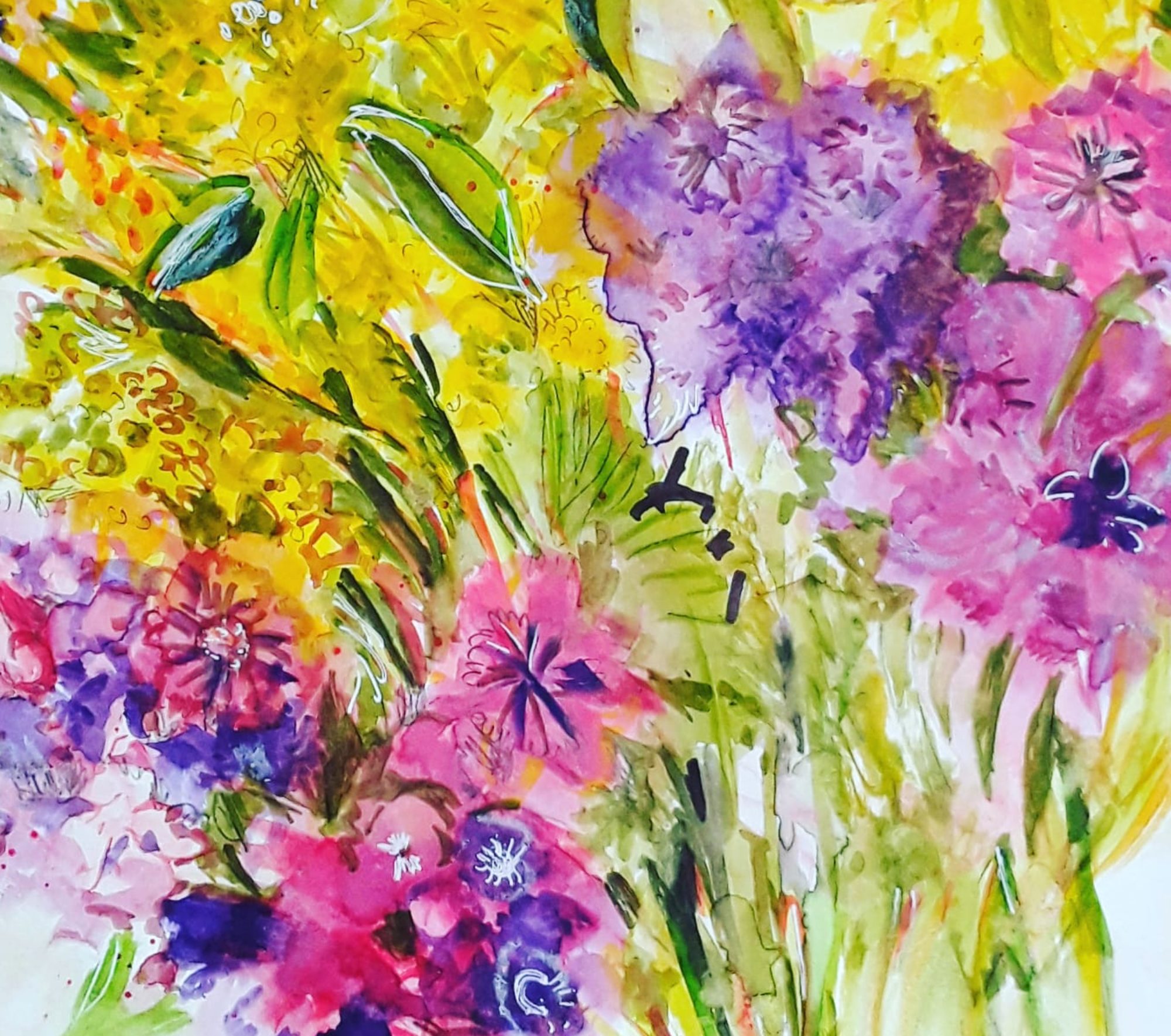
Good morning, everyone. I thought I’d do a little catch up post. Because I’m producing lots of small drawings and paintings at the moment, including painting buildings. Rather than big projects and I suppose that doing Inktober 2021 is partly to blame for that. ( It’s all on my Instagram @margarethallfineart)
Anyway, I really enjoyed doing this quick, virtual urban sketch, thanks to the challenge set by @tobyurbansketch. Actually, I don’t know the location of this photo, but the idea is to imagine that you’re on the spot. Then sketch quickly and fluently, spending the same time on it that you would in the field. In fact, for me that’s about 40 minutes. In this way, you can try to retain the freshness and not overwork it. By the way, this way of urban sketching was very popular during lockdowns, for obvious reasons.
Painting Buildings in the Garden

In contrast, I was actually here on the spot for this sketch, nothing virtual about it! In effect, we have three sheds, a greenhouse and a polytunnel in our allotment. So, I always have plenty of material to paint, not to mention the plants and the crops. Have a look at this post here, for more garden buildings.
Although you might not notice, I can definitely see some improvements in my watercolour sketching now. Because studying techniques in any styles and paints usually does pay off. For example, I’m pleased with the way I’ve achieved more fluidity in the sky and foliage here. Although I’ve spotted a tendency to push the paint around like I used to, if I don’t concentrate. So, more practice required, I think – but, that’s the fun part!












































































